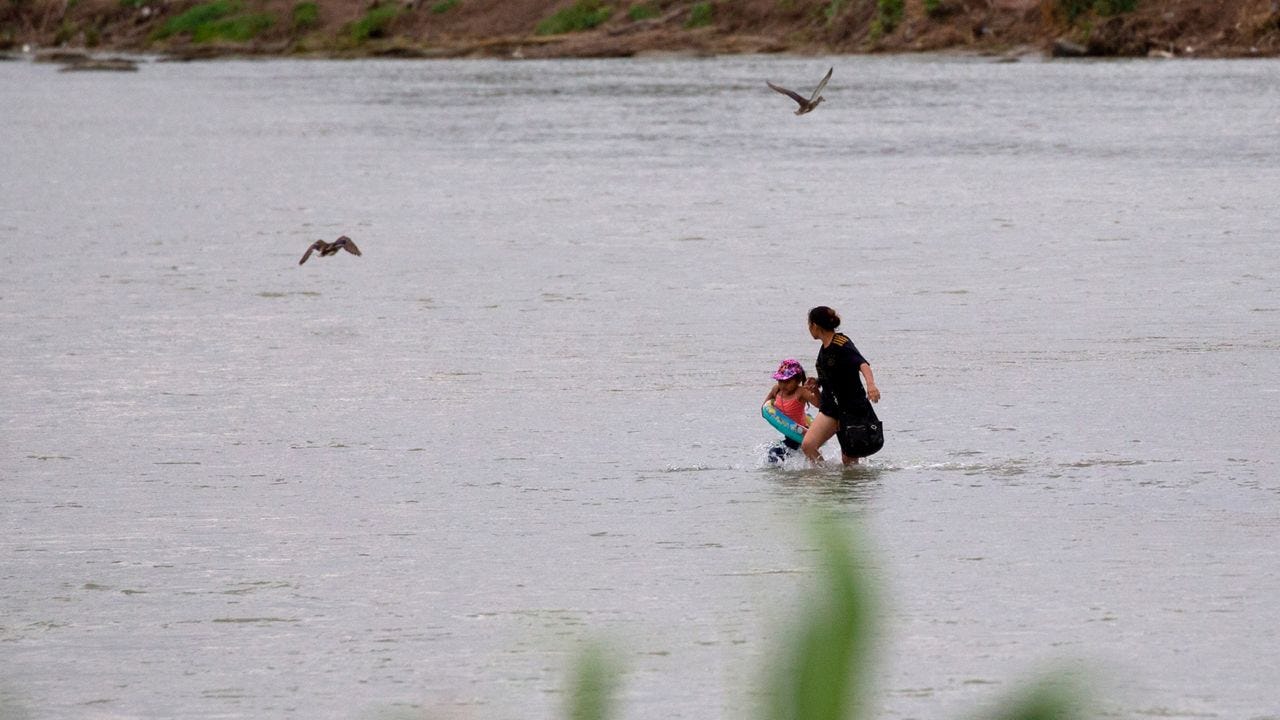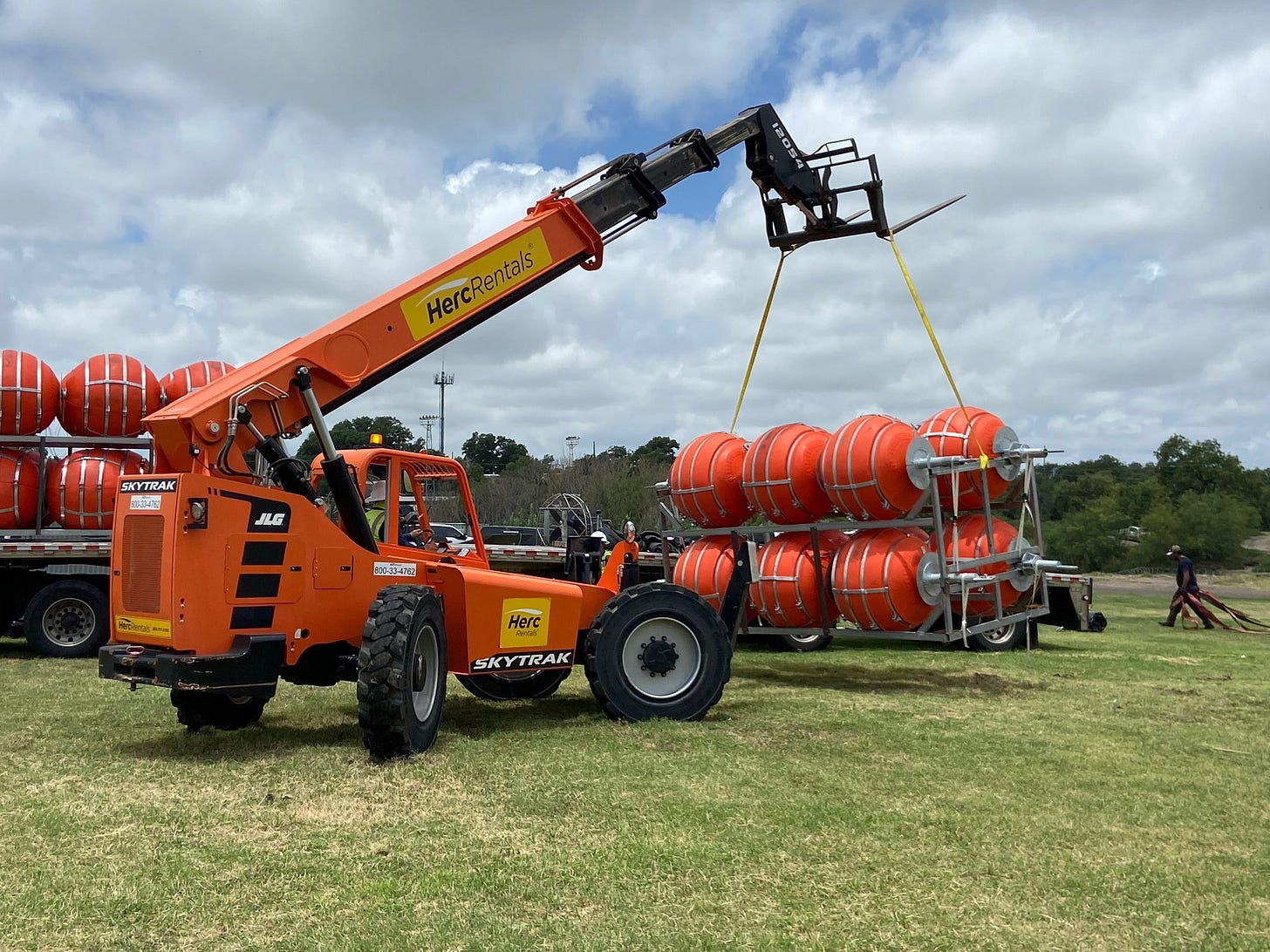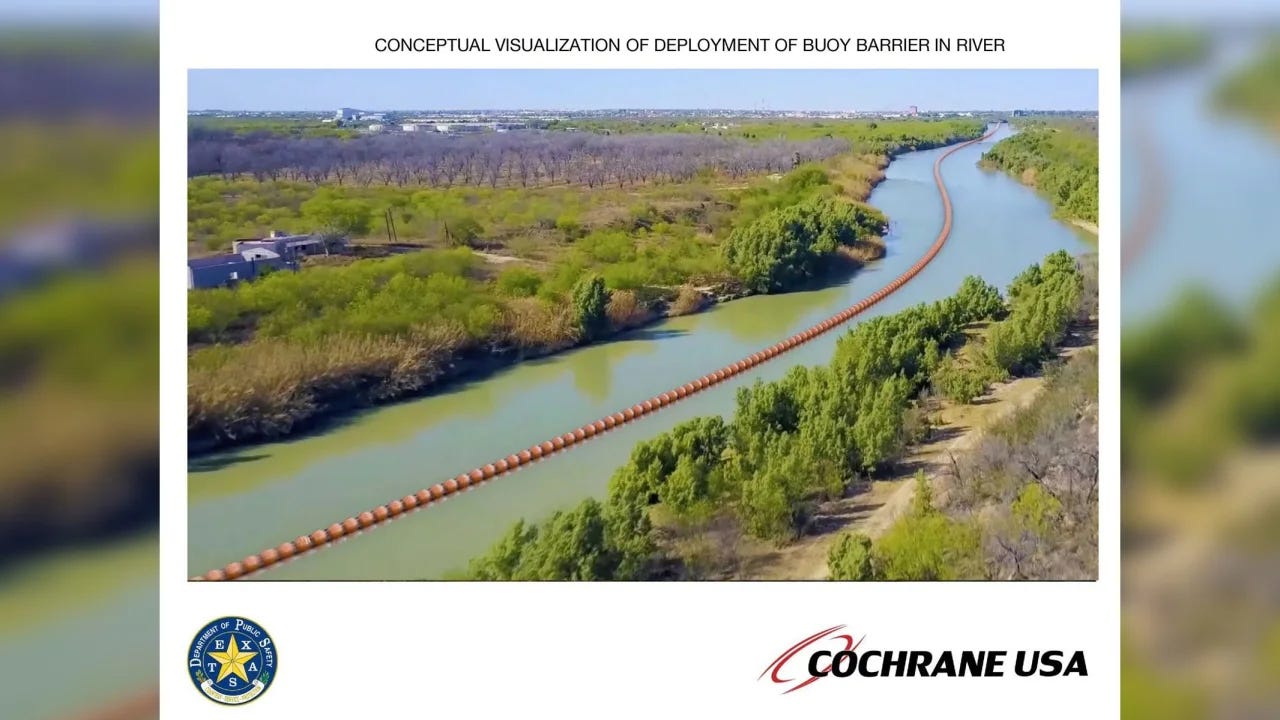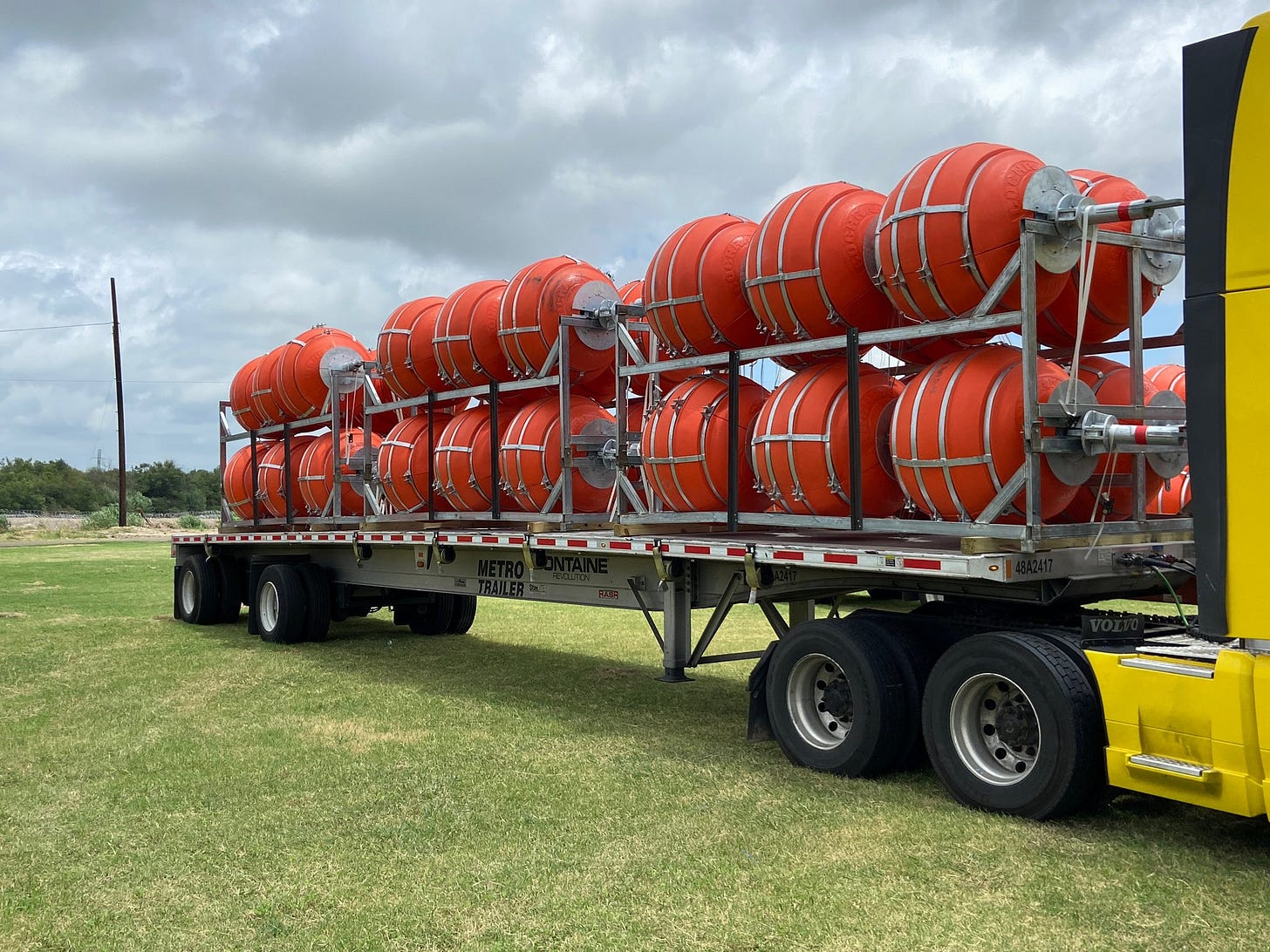Swimming to America
“Do you know what a foreign accent is? It’s a sign of bravery.” - Amy Chua, “Battle Hymn of the Tiger Mother”

The police seemed very cooperative. I assumed they wanted public credit for doing their jobs. Every morning at the radio station, I took calls from dispatchers or officers working for several of the law enforcement departments in communities of the Rio Grande Valley. They gave me information from overnight blotters, arrests, and major accidents, often detailing a loss of life.
“We’ve got three bodies down here,” I was told one morning after only being on my new job a few weeks. “You ought to come down and see them.”
“Was there a shooting?”
“No, no, no,” the officer said. “They’re floaters. Been in the water a while, too.”
“Floaters?”
“Yeah, people trying to cross the Rio Grande to get into this country. That’s what we call them. Pretty sad, too. Looks like one of them is a child, maybe seven or eight years old.”
I did not want to see bodies, especially of a dead child, but the Hidalgo PD cop was urging me to come witness, and his continued cooperation with my little news shop was of value. I needed to cultivate the relationship.
“Okay, give me directions and I’ll run down there as soon as I’m off the air.”
What I saw did not resemble anything human. Three large, black blobs, inflated by gasses, floated in a tangle of roots on the north bank of the Rio Grande. The coroner’s wagon was parked nearby and two men in flat-bottomed boats had gaffer hooks grabbing at the badly decayed human remains. They reached the larger one with a hook beneath what appeared have been an arm and a great hissing release of gas and putrefying flesh spurted into the air, deflating the size of the corpse.
“That’s the awful part that happens when they’ve been in the water,” the cop said. “We can’t even hardly treat them like they were human. But there’s no other way to recover the bodies.”
I remember the officer’s face, but not his name. He appeared to be in his mid to late thirties, a bit overweight, and Mexican American. Nothing about him projected as a hardened cop. His face was soft and sad, and when he took a handkerchief from his pocket, I was unable to tell if he was wiping tears away or the sweat from the morning’s sub-tropical heat.
“So, they were swimming across and didn’t make it?” I asked.
“Most likely. We won’t know until the coroner’s report. I don’t know why they come to this deep part of the river. Probably didn’t know.” He looked away from me. “In a different time, could’ve been my grandparents.”

I do not recall the dead ever being identified beyond “male, female, male child,” in a subsequent news release. Somewhere in Mexico, there was a family from which three people had disappeared, off to make a new life in America. Their plans were probably to find work, get back in touch, and send money back to relatives, maybe save for their own home. Instead, they became an unanswered mystery to the people who had loved them and hated to see them undertake a dangerous journey.
We still do not get to know their names. On the U.S. side of the river, they become “bodies” or “drowning victims,” dehumanizing linguistics that mitigate emotional responses. If they survive the river crossing and are captured and returned to Mexico, the descriptive becomes “deportee.” But who are they? Where did they come from? Central America? Mexico? What were their dreams that were so profoundly moving they took such risks to reach a country where they did not know another soul or even the language?
Calls to the radio station’s newsroom about bodies in the river probably averaged around ten per month in the two years I reported on that part of Texas, which meant at least 240 dead. When we moved up the Rio Grande 170 miles to Laredo, we lived on a ranch about a half mile north of the river, and I began working in television news. The river was no less dangerous and claimed as many migrants as it had downstream where it approached the Gulf of Mexico.
My challenge was different, though. I was not certain why, but my news director insisted we cover reports of bodies in the river, and I was unable to imagine the TV cameras showing what I had seen in other locations. Ultimately, of course, we did not show the mangled and rotting flesh and focused the lenses on Border Patrol officers and body bags. The horror was effectively diminished, but I could not help but think about the dead and their dreams. We often had them stop at our doorstep, still wet from their swim, asking for water to drink on their long, dangerous walk north through the South Texas brush country.
In the almost 50 years since I saw my first “floaters,” the river has become increasingly dangerous for the desperate people and their children trying to set foot on its north bank. The risks have not been amplified by nature’s designs on the watercourse, floods, or dams, though climate change has made heat a larger risk factor. Dangers have mostly come from physical barriers built along the riverfront as part of a political effort to win points among radical conservatives wanting to militarize the border into a North American version of the Berlin Wall. There are shipping containers, razor wire, armed soldiers, and state troopers, blocking ingress, and this week there will be a new obstacle.

The governor of Texas, too desperate for attention to consider humane policies on the border, has deployed a floating marine barrier in the Rio Grande near Eagle Pass. In addition to being an ecological and geographic blight, the buoyant, tethered balls are four to six feet in height and are certain to endanger anyone swimming across the river. Abbott suggests the goal is deterrence but the state troopers, National Guard soldiers, and hundreds of troops from Florida, have done nothing to reduce the flow of humanity toward the Texas border with Mexico. Migrants will change locations for their crossings, moving to regions where their lives will be at greater risk in desert conditions. Loss of life seems not to be a toll measured by Greg Abbott, a Republican with distant, fatuous dreams of being president.
The move to float the barrier was immediately challenged in court with a lawsuit by a river outfitter, who claims Abbott has no authority to create his own border patrol and blockade the river. The suit was filed by Jesse Fuentes of Eagle Pass, owner of Epi’s Canoe and Kayak Team, Llc, who argues the governor is misusing the state’s 1975 disaster act to deploy resources to block the border. The language of the filing argues the governor is simply creating a political intrigue that does not truly exist and that his actions “represent a hateful policy that intends to create the impression that Mexicans, immigrants, and Mexican Americans … are dangerous.”
Abbott and his radical political party complain about the president’s border policies, but those Biden regulations have, of late, dramatically reduced illegal crossings. Even the conservative Cato Institute has given Biden credit for the decline in those numbers. Lifting the Title 42 order allowing immediate deportation for Covid reasons, adding increased penalties for illegal entry, and creating legal pathways to apply for U.S. admission, has resulted in a 70 percent drop in unlawful entries. Customs and Border Protection, which was encountering more than 10,000 migrants daily, now reports that figure is down to 3400 at the end of June. Using Title 8 regulations, the government has also been able to expedite deportations for anyone unable to claim a legal basis for being in this country.

These facts make it clear that what Abbott and his Republican consorts are doing by militarizing the Texas border is not stopping people, it is only killing them. Policy will make corrections on our immigration challenges, not guns and razor wire and floating barriers that disfigure the environment and cost more lives. Manufactured barriers do little more than create profitable markets for corporations providing donations to Abbott and Texas Republicans. While GOP lawmakers from Washington and Texas make frequent visits to the border for photo opportunities and to exercise a pretense that they know what it takes to solve immigration issues, they have yet to offer any legislation or even a philosophical umbrella that would guide the drafting of such laws. They do not have a solution and if they did it would not have been offered. If they can proclaim a problem at the border and hope the blame for it falls on the president, they will continue to ignore any solution in favor of possible political advantage.
Meanwhile, attempts at border crossing continue to become increasingly deadly. Last year, 748 people were known to have lost their lives at the Southwest frontier between the two countries, and there is little doubt the actions of the Texas governor can be connected to that figure. The number was likely higher because local authorities, who often manage the fatality cases, do not consistently report to federal agencies. In 2021, the year prior to Abbott’s accelerated border actions, there had been only 151 dead, according to federal agencies on the job. The running tally for 2023 is unknown, but the dying has not ended, and sometimes seems hardly of note. Last week, four were found dead near Eagle Pass, the location where Abbott has now deployed his floating barrier. If history were to record their passings, they would be known only as “infant girl” and “adult female.” Two more bodies were recovered in the same area a few days later, described as “adult male” and “adult female.” During the previous September, “nine drowning victims” died at the same Eagle Pass crossing when the river unexpectedly rose two feet.
We do not get to know their names. They are never released. When “victims” die it is less politically painful than when a “Javier Gonzales from a village outside of Monterrey died while swimming the river with his two year old daughter, Rosa, as he attempted to escape cartel members threatening his family for his refusal to sell drugs.” There are no journalistic institutions that have the resources or the determination to acquire these stories, nor is there any indication state and federal agencies will release information they acquire on dead migrants. The dead are merely nameless numbers, and we consider ourselves almost helpless witnesses to their tragedies.

We are not, though, not yet. We can still vote and rid ourselves of the venom spewed by the Greg Abbotts and Ron DeSantises and Donald Trumps and find leaders who want to create policies that sustain our relationships with Mexico and its people. The immigration problem is not simply a legal problem; it is a profound humanitarian crisis and Americans have played their role in its constant deterioration. Our drug habits have compounded a political, social, economic, and legal disintegration of Mexico’s culture, but we hardly acknowledge our involvement in creation of demand for illegally transported fentanyl. American business practices in Central America have also helped to create strongmen who do our bidding at the expense of their own countries, and near anarchy results.
And no, we alone are not responsible for this great human failure of morals and laws. But we will not bring it to a conclusion by pointing fingers at immigrants, desperate to find better lives. Policy that works is not impossible, but politicians who work seem increasingly improbable, and until we find leadership that wants more than campaign donations and to win reelection, nothing will change. There will be more “infant drowns” and “nine victims” headlines, and we will grow increasingly numb, which will be our own kind of death.